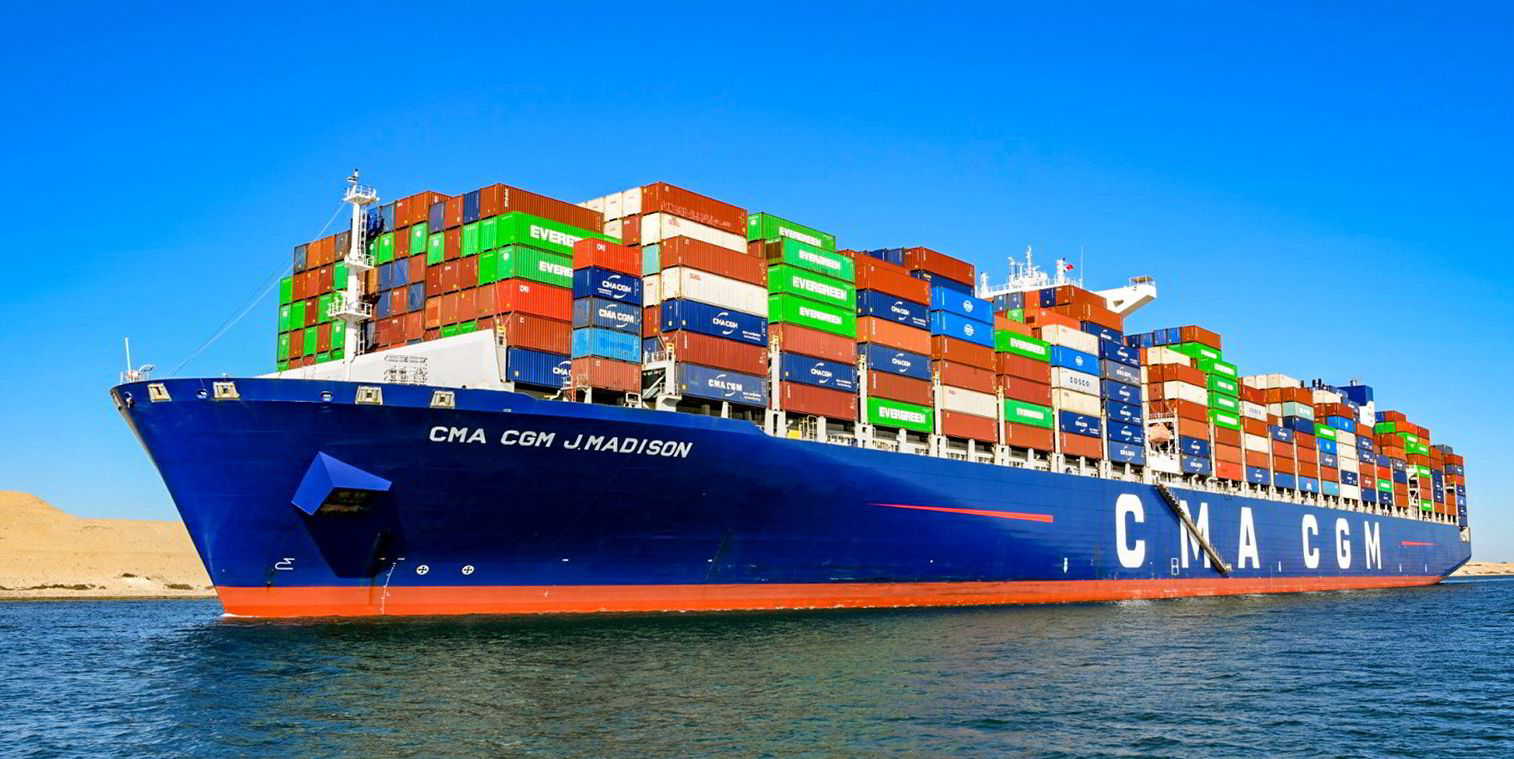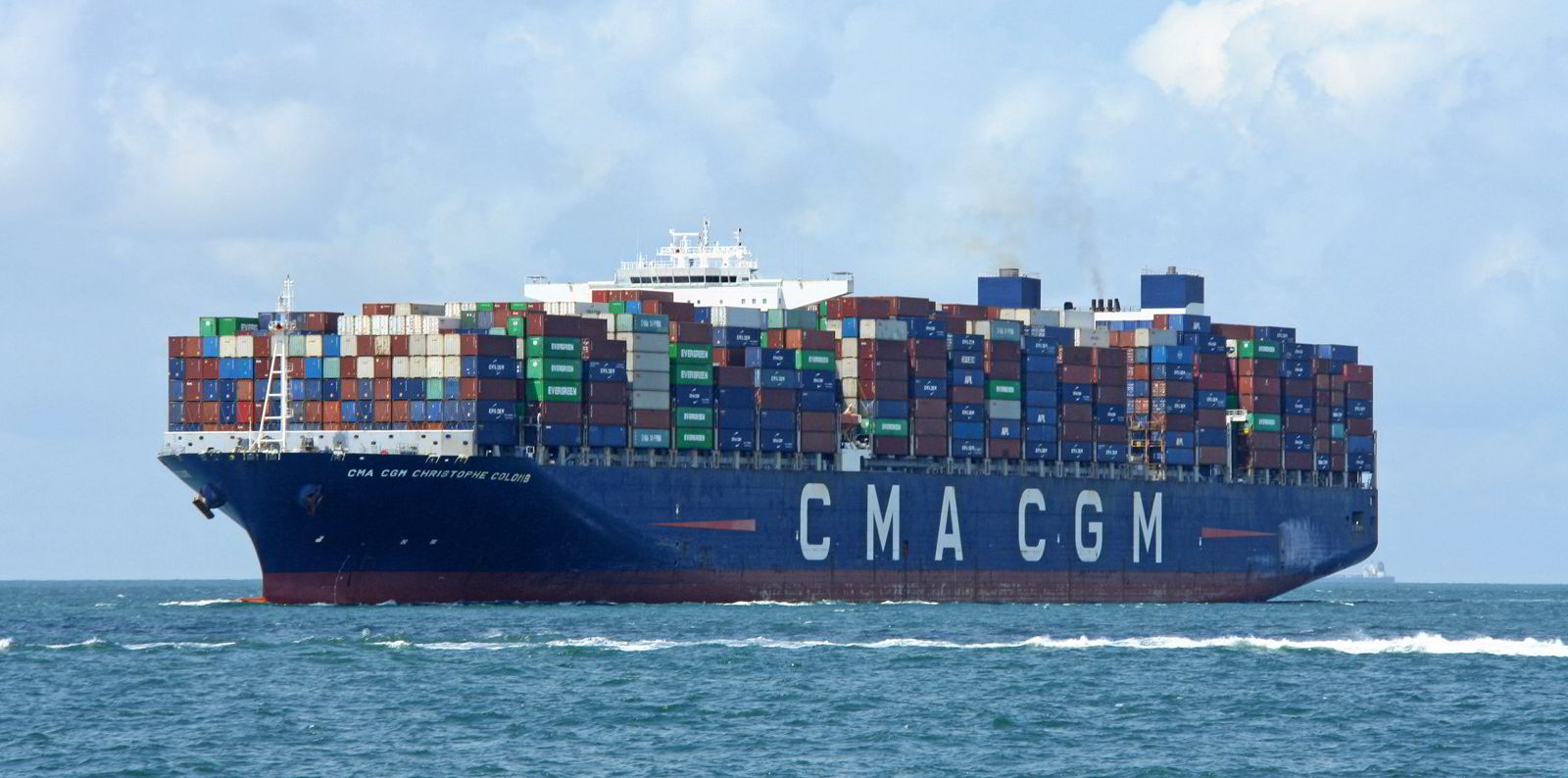Shippers booking with CMA CGM and its vessel-sharing partners of the Ocean Alliance do not know whether their cargo will pass through the Red Sea, a leading analyst warns.
That creates uncertainty as to whether shippers require expensive war risk insurance for the cargo, which might arrive two weeks ahead of schedule, according to Lars Jensen of Danish consultancy Vespucci Maritime.
CMA CGM resumed Red Sea transits in late February, having earlier suspended them following an attack on a vessel it operated.
The French carrier said it will evaluate transits on a case-by-case basis, but will not necessarily announce beforehand what the ships will do, said Jensen.
That creates risk for shippers using the Ocean Alliance comprising CMA CGM, Cosco Shipping of China and its sister company OOCL, and Taiwanese carrier Evergreen.
Most major liner operators are avoiding the Red Sea, although some smaller Middle Eastern carriers continue to offer services.
A handful of Chinese niche carriers continue to operate their China-Russia services.

But it is unlikely that a Suez routing will be resumed any time soon by the major carriers, most of which tend to avoid the region, Jensen writes in the FBX monthly report of the Baltic Exchange.
He argues that carriers’ networks have now stabilised in their new round-Africa loops.
The initial disruptions to vessel and equipment availability have not resulted in a severe lack of capacity.
So the expectation is that contract rates for the trade from Asia into the US West Coast would end up at roughly the same levels as last year.
Rates pass their peak
Container freight rates have passed their peak caused by the Red Sea crisis and Chinese New Year in February.
The Freightos Baltic Global Index dipped to $3,018 per 40-foot equivalent unit (feu) on 8 March, down $464 or 15% from its peak on Valentine’s Day.
Carriers have managed to avoid significant port congestion at major origin and destination ports, says Freightos lead analyst Judah Levine.
With carriers adjusting operations to accommodate the diversions and maintain adjusted schedules, rates are likely to ease further as ocean freight enters its slow season, he argues.
Rates from Asia to the US West Coast were down to $4,376 per feu this week, down from a peak of more $5,000 per feu one month ago.
The expectation of falling rates is reflected in the futures market, where April contracts are $4,250 per teu, their lowest since the beginning of February, according to Freight Investor Services Kieran Walsh.
Forward prices for the fourth quarter of this year and the first quarter of 2025 are only $4,000.
Rates from Asia to the US East Coast are also down to below $6,000 per feu from $6,709 at their peak in February.
The impact of the diversions on non-Red Sea trade lanes is also fading.
Transatlantic rates — which increased to $1,862 per feu in February — dropped back to $1,671 per feu this week.
Prices remain significantly higher than levels before the Houthi attacks in the Red Sea began.
But carriers may not be expecting diversions and market conditions to allow rates to climb much more and some are postponing additional planned surcharges, Levine noted.






